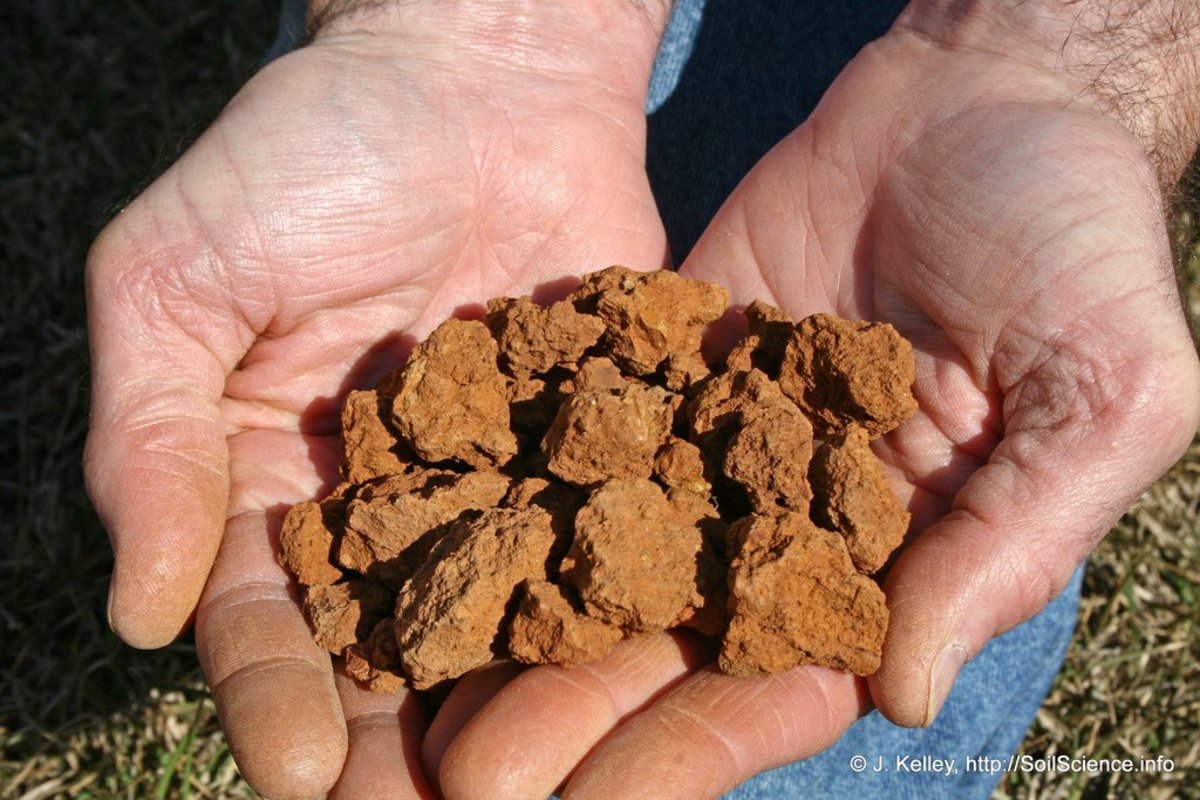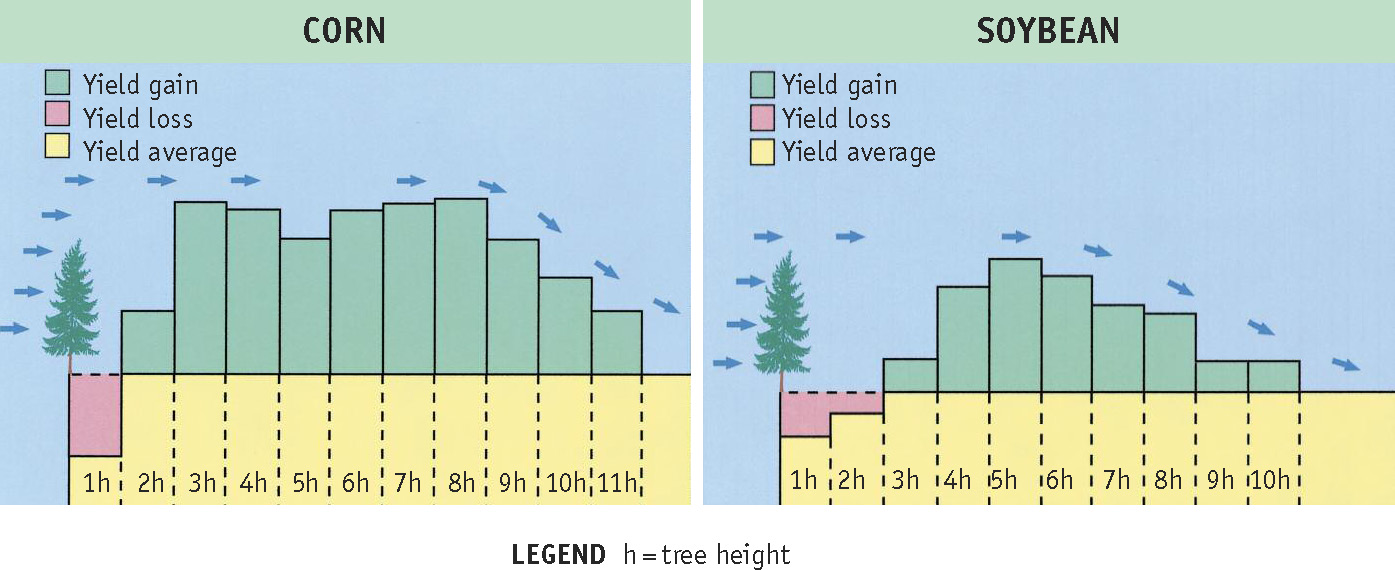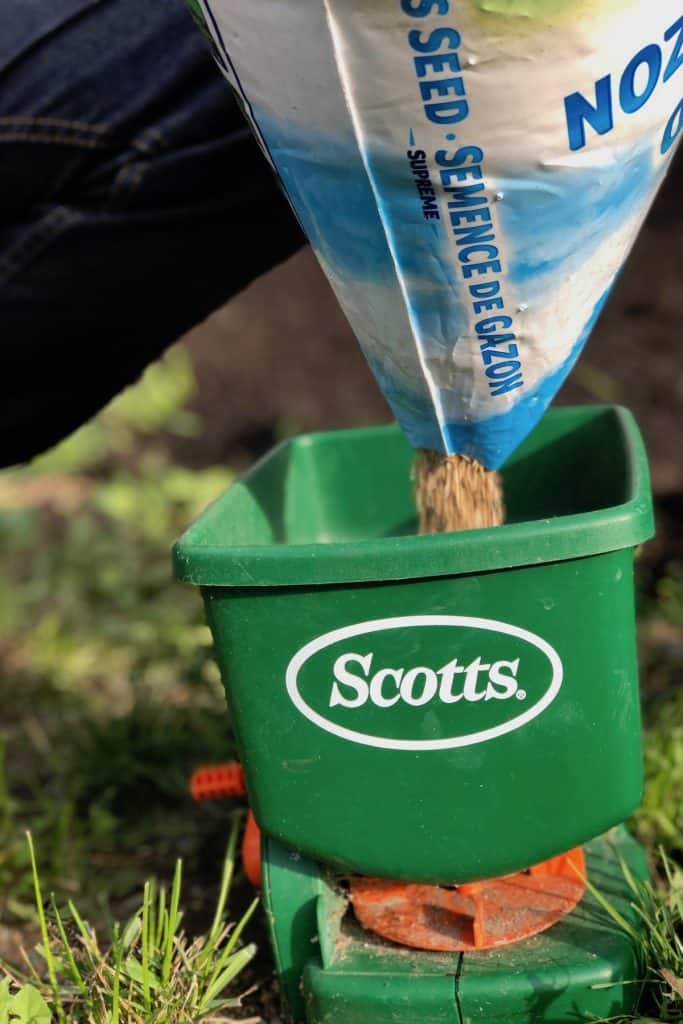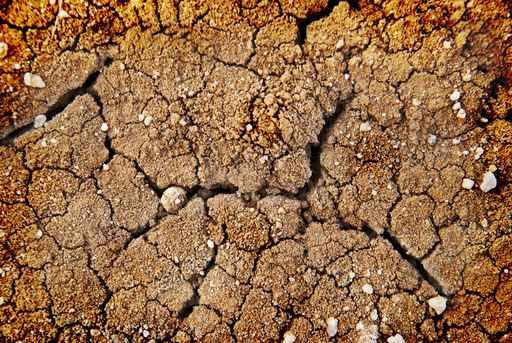Along with roots sitting in wet soil, compacted soil that doesn't drain well can also contribute to run off meaning water doesn't get absorbed at all. Plant roots can also be starved of oxygen if the soil is compacted. Incorporating it into your garden soil will help break it up and help aerate for healthier roots.
Soil conditioners can also help or try green manure and leaf mulch. Organic matter works to improve both soil structure and nutrient content. In light, sandy soils it works as glue, binding particles together to improve its ability to retain moisture and nutrients. Conversely, it opens up heavy clay soils so they can drain more easily. But no matter what your soil type, it will truly benefit from regular applications of organic matter to feed and sustain the plants grown in it. Cover crops, also called green manure crops, help loosen clay or compacted soils with their roots and by adding organic matter.
They also prevent nutrient loss and erosion during the non-growing season. Leguminous cover crops, such as winter rye, alfalfa, hairy vetch and clover, which add nitrogen to the soil, are usually planted at the end of summer or early fall. Regularly spreading organic matter over the soil surface is the best long-term solution to soil compaction. Organic matter includes compost, shredded leaf mulch, wood chips, straw and chopped leaves. Apply a 3- to 4-inch layer of compost or a layer of wood chips or shredded leaf mulch 2 to 3 inches deep over bare soil in flower beds. Without any further help, soil organisms will incorporate the organic matter and begin to open up the soil.
If you'd like to quickly break up a hard soil surface for planting, mix the organic matter into the top 3 to 6 inches of soil with a spade. To help soften hard soil in a vegetable garden, add a 2-inch layer of compost twice a year and mix it into the top 2 inches of soil. If the soil in your garden or vegetable patch is bare over winter, spread a layer of mulch over it to protect it from heavy rainfall. Along with adding compost, a second strategy for adding organic matter to my clay soil is cover cropping. I plant cover crops any time the beds in my garden would otherwise be unplanted or fallow.
Fallow periods provide little additional organic biomass while allowing the decomposition of organic matter in the soil to continue. They contribute to the improvements in soil structure that I described earlier. And they can smother weeds and even suppress weed seed germination. Many cover crops will also suppress pathogenic nematodes, for example root knot nematode. At the opposite end of the scale from sandy soil are clay soils.
These hold water and nutrients very well but don't drain as well as sandy soils, especially if compacted, a common situation for lawns with a clay soil base. During the initial, pre-garden phase of my soil improvement plan, I managed to break up 10 inches of hard-packed clay with endless swings of my trusty mattock. I spread compost over the surface of the beds an inch at a time and rototilled it in. I was careful not to work the clay when it was too wet, because clay worked wet can result in some tenacious clods, very reluctant in their willingness to ever come apart again.
I tried to work the compost deep into the soil, and along with it, I added lime and phosphorus, the clay soil in my garden needing both. When surface-applied, neither of these materials moves down through the soil, so incorporation to ample depth is very important to permit roots to grow into the subsoil. After 3 to 4 inches of compost, I had the "raised bed" I wanted.
Weighty gardening equipment, foot traffic and heavy downpours cause soil compaction, and clay and loam soils are most susceptible. However, even sandy soils can harden when compressed by heavy equipment. Excessive weight and rain close the open pores between the soil particles; as a result, the soil hardens. Clay soils often drain very slowly after rainfall, and then they harden and crack when the weather turns dry and warm. To avoid compacting soil, create paths to avoid walking on growing areas. Don't dig the soil excessively or when it's wet, and don't mix sand into clay soil, which makes it like concrete.
Next, gently squeeze the ball to lengthen it into a strip or 'ribbon' and see how long you can make it before it starts to break up. The more clay it contains, the longer the ribbon will get and the more plastic it will feel to the touch. Soil ribbons can range in length from about 5mm – 75mm, with sandy soils being shortest, loamy soils in the middle and clay soils the longest. While soils that contain a lot of clay or sand may need work to improve them, loamy soils are generally ideal. These contain a mixture of sand, silt, organic matter and clay, providing the right balance of nutrients, oxygen, water and drainage which are just what your lawn needs.
I always see things on how to work with sandy, silty, or clay soils, practically nothing on peat soils. I moved to an area this last Fall, that had a lot of glacier activity and is a meadow or grass land now. We would like to grow a garden, but we have black peat soil for about 14 feet down. I used a home soil test and found no nitrogen in the soil.
There is some phosphorus and a small amount of potassium. What should we do to our soil to be able to grow a vegetable garden and fruit trees? Common soil amendments include compost, grass clippings, straw, shredded leaves, rotted manure and dried seaweed. Clay's potential as one of the best soil types for plant growth lies in its unique properties. Managed well, clay soil typically requires less irrigation and less fertilizer, and leads to healthier plants all around. Compaction is most likely to occur with heavier soils like clay and loam, but when heavy equipment is used, sandy soils can become compacted.
These are soil particles that are packed closely together. The problem may be compounded by events that have happened to the soil over the course of years. The pore spaces are reduced to the point that air and water cannot move freely and plant roots cannot grow easily into the surrounding soil. The soil could remain overly wet longer than is healthy for the plants growing there.
Cover crops help break up hard soils with their roots and by adding plant matter to the soil. Sow cover crops when the soil is bare, such as over winter. Before planting the area with desired plants in spring, dig up the cover crop and bury the plants in the soil. Cover crops include buckwheat , cereal rye and crimson clover , which are annual plants that naturally die down at the end of their growing seasons.
Department of Agriculture plant hardiness zones 10 through 12, and cereal rye is hardy in USDA zones 3 through 7. Crimson clover is a winter annual in USDA zones 6 through 9 and a summer annual in zones 3 through 4. Sawdust or wood chips, leaf mould, peat moss, coffee grounds and fresh manure will all do the job, but expect to wait many weeks or months to see results.
Agricultural sulphur can be quicker acting but it may still take several weeks to do its thing and isn't as effective as organic material over time. Over the years of gardening and landscaping on this property, we continually had to battle the clay soils. However, major losses in soil organic matter content can take place when the soil is inverted or mixed annually by tillage. Extensive tillage stimulates microbial activity , and the consumption of mass quantities of organic matter ensues. After your clay soil becomes more friable and you have provided a deep root zone for your garden plants, you should consider reducing tillage.
Because the soil remains undisturbed, fertilizers and other soil amendments do not become homogenized in the tillage layer. Plant feeder roots, therefore, tend to proliferate in the top 2 inches of fertile topsoil. Compost is decomposed organic matter, and it is the best thing you use to improve the health of garden soil. Organic matter in soil serves as food for earthworms, insects, bacteria and fungi-they transform it to soil nutrients and humus.
Through this decomposition process, materials are made available as foods to growing plants. In finely textured clay soils, organic material creates aggregates of the soil particles, improving drainage and making it easier to work. Earthworms are especially helpful in making and keeping soil porous and well draining, said Brewer. Bark, sawdust, manure, leaf mold, compost and peat moss are among the organic amendments commonly used to improve clay soil. Two or three inches of organic materials should be spread and rototilled, forked or dug into the top six or seven inches of your garden beds. Chop over-wintered cover crops directly into spring soils a few weeks before planting.
During the growing season, sow a quick-growing cover crop, such as buckwheat, to fill the gap between spring and fall crops. When it's time to plant, pull the buckwheat cover and use it as a mulch for fall garden beds. Good soil provides just the right space between its particles to hold air that plants will use. Silty and heavy clay soils have small particles that are close together.
Sandy soils have the opposite problem; their particles are too big and spaced out. The excessive amount of air in sandy soil leads to rapid decomposition of organic matter. Organic soil is rich in humus, the end result of decaying materials such as leaves, grass clippings and compost. Good organic garden soil is loose and fluffy — filled with air that plant roots need — and it has plenty of minerals essential for vigorous plant growth. It is alive with living organisms — from earthworms to fungi and bacteria — that help maintain the quality of the soil. Proper pH is also an essential characteristic of healthy soil.
Mulching – Clay soils can tend to speed water runoff because water isn't absorbed as quickly into clay soils as it is other soils. Clay soils also tends to stick to the bottoms of your shoes, which can make a mess when you go indoors. By adding a layer of mulch to clay soil, you not only help keep the house clean, but can reduce the number of weeds that sprout. As mulch decomposes,it will enhance nutrition and water retention, which ultimately allows for better plant growth. Mulch will slow down water run-off allowing clay soil more time to absorb, and store, water. A layer of mulch is also cooler than exposed soil which helps to reduce temperatures overall in the garden.
Surprisingly often, people imagine that the proper way to improve dense, clay soil is to add the opposite kind of mineral material—sand. After all, loamy soils, viewed as ideal garden soil, are a mixture of sand and clay. Unfortunately, when sand is added directly to clay, the result is something that more accurately resembles concrete.
The reason loamy soils are great for plants is that they have a large ratio of organic material in them as a foundation for the sand and clay. Without lots of organic material, clay plus sand equals an awful garden. Clay soils are best improved with the addition of compost and other organic materials only. To improve your soil, you'll need to add 6 to 8 inches of organic matter to the entire bed. Grass clippings (as long as they haven't been treated with chemicals), shredded leaves, rotted manure, and compost are all perfect choices.
The organic matter needs to be mixed into the top 6 to 12 inches of soil. Digging it in and mixing it with a shovel is a great way to do this, as it moves a lot of earth without pulverizing the soil particles the way tilling can. However, if digging is just too hard on your back, using a tiller is a fine method.
Gypsum is easily applied to the soil surface with a regular lawn spreader. It's an ideal amendment for improving soil structure and relieving compaction in existing lawns and gardens. In beds earmarked for vegetables and annual flowers, amend the soil before each new crop is planted.
Compost and well-rotted manure are preferred by most gardeners, since they dramatically improve the soil's structure, making it hospitable to the fine, tiny roots of seedlings. Unamended soil may dry into hard clods that small roots cannot penetrate, and plants may grow slowly, be stunted, or die as a result. Manure and compost break down rapidly–manure in a few weeks, compost in several months–so be sure to replenish these amendments before you plant each crop. Mixing sand into clay soils will create a concrete-like mess rather than improving your soil. Rather than trying to make soil more sandy, you want to focus on adding as much organic matter as possible, which is what will really improve soil structure.
This heavy, often dark, smooth soil is made up of very fine particles between which there are small air spaces. It is difficult to cultivate, being sticky when wet, yet hard and even cracking, when dry. In situations where drainage is poor, plants can rot because of waterlogging and a lack of air around the roots. Clay is also a cold soil taking time to warm up in spring, which can slow a plant's root growth. On the upside, clay is not only richer in nutrients than sand, but also retains nutrients and holds water well.
Chalk soils need plentiful additions of organic matter; on some types it is almost impossible to apply too much. On such a site you would do best to dig as deeply as possible each year - preferably double digging. This will enable you to get organic matter well down into the soil, so that, over a number of years, you gradually increase the depth of suitable growing soil. Also add organic matter to the topsoil - mix it well in if possible.
Any of the kinds of organic matter suggested for clay soils can be used, but very acid materials are particularly suitable as they help to reduce alkalinity - if only very slightly. The main consideration in improving sandy soils is to incorporate as much organic matter as possible to supply humus. Most sandy soils are seriously lacking in humus and so have a very poor structure, the soil being unable to hold water and plant foods. The humus acts as a sponge and ensures adequate moisture during dry periods. Apply plenty of organic matter every year for it quickly disappears in this type of soil.
Also apply a general-purpose fertilizer in spring, prior to sowing and planting. Following any of these treatments applying 6X in early spring gets your garden off to the perfect start for the season. 6X is a well-known and well-loved alternative to traditional farmyard manure which takes a lot of the effort out of spreading manure on the garden. One 15kg sack is equivalent to six or more sacks of traditional bagged farmyard manure and treats up to 184 sq metres . For starters, fall mulching gives you the upper hand on spring weeds.
Pull weeds that do emerge in the spring early and quickly, when they are small and easy to manage. If not noxious–that is, not spreading vigorously by root or stem–I suggest laying them right back on the soil surface and covering them with from 2 to 4 inches of organic mulch. Covering garden beds right from the start gives you the jump on garden weeds, while feeding the soil with organic material at the same time. Adding organic matter is the key to loosening hard soils.


























No comments:
Post a Comment
Note: Only a member of this blog may post a comment.